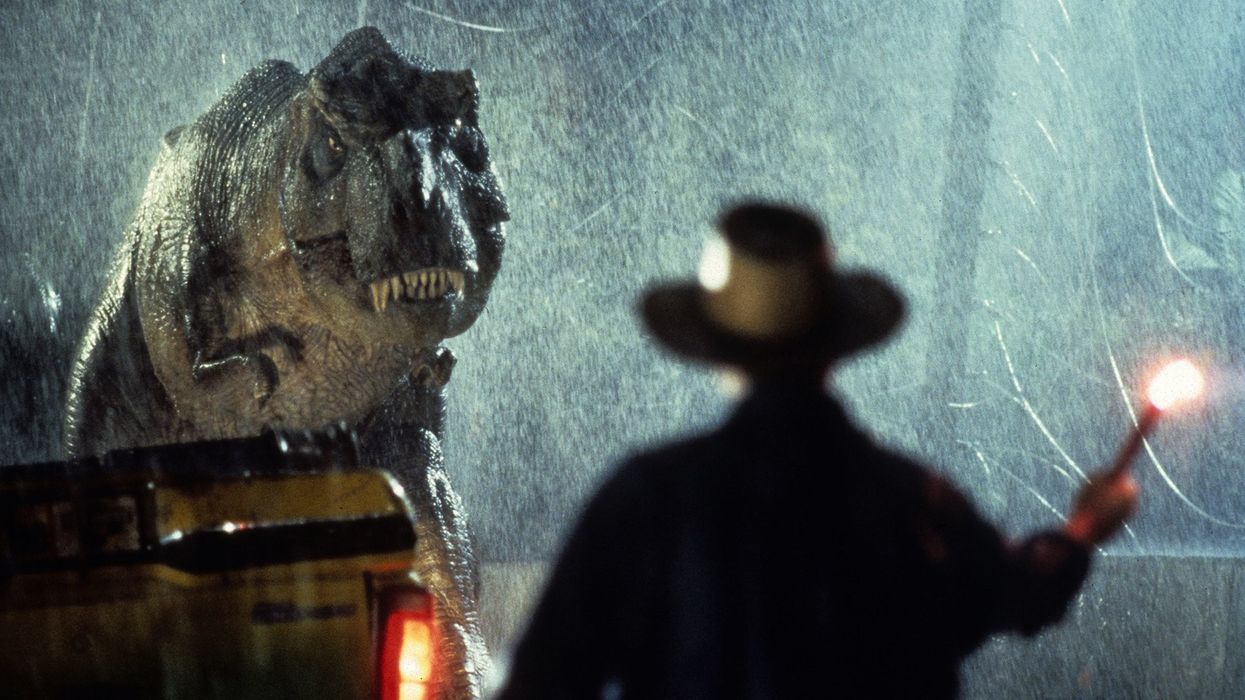'Jurassic Park': How Does the 4K Blu-ray Compare to 35mm?
Jurassic Park has changed a lot since its release.

We have seen so many movies get processed in different ways for DVD, digital, and Blu-ray releases. Have we lost the way the movie originally looked? And is that a good or bad thing?
Dean Cundey, ASC had just finished shooting Hook for Steven Spielberg when the director asked if he was interested in working on Jurassic Park. He jumped at the chance to work with such scale and imagination.
But does the movie look the same now as when it came out?
I stumbled across this YouTube video where CNXToonami compares the original 35mm of Jurassic Park to what it looks like now on Blu-ray. There is a warning before watching: "Ignore the slight frame mismatch; was a bit of trouble converting the UHD with the right SDR tonemapping to import to my editing program."
Check it out, and let's talk after the jump.
Jurassic Park: 4K Blu-ray vs. 35mm
When Jurassic Park was brought to Blu-ray, they actually scanned the negatives of the film and used the raw data to get it to the digitized version. One of the big differences is in the color of the 35mm, which seems bluer, as compared to the slightly more yellow 4K.
Over the years, Jurassic Park has undergone many transfers, and while 4K is regarded as the best one, it cannot hold a candle to seeing the original movie on film.
Even great conversations can only imitate what we saw, and if you were not alive in 1993 to see the movie in theaters, it's hard to put into terms the way the movie should look. And it's something we're always chasing.
Original Jurassic Park Shooting Details
- Color: Color (Eastmancolor)
- Aspect Ratio: 1.37 : 1 (negative ratio) and 1.85 : 1 (theatrical ratio)
- Camera: Panavision Panaflex Gold, Panavision Primo, and Slant Focus Lenses, Panavision Panaflex Platinum, Panavision Primo, and Slant Focus Lenses
- Laboratory: DeLuxe, Hollywood (CA), USA (color)
- Negative Format: 35 mm (also horizontal) (Eastman EXR 50D 5245, EXR 100T 5248, EXR 500T 5296)
- Cinematographic Process: Spherical, VistaVision (visual effects)
- Printed Film Format: 35 mm (Eastman 5384), 70 mm (horizontal) (IMAX DMR blow-up) (dual-strip 3-D) (Kodak Vision 2383) (2013 re-release), D-Cinema (also 3-D version) (2013 re-release)
What's the Verdict?
It's always fun to watch these comparisons. As more and more films are transferred to 4K, it's important to look back at the original 35mm prints to see what they got right, and what needs to be fixed. I am all for the preservation and updating of films, but I think we need to make sure every artist's intention can be found on the screen.
Let me know what you think in the comments.
Source: CNXToonami











